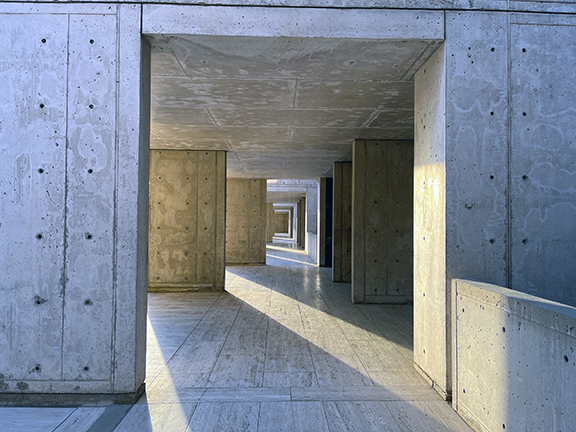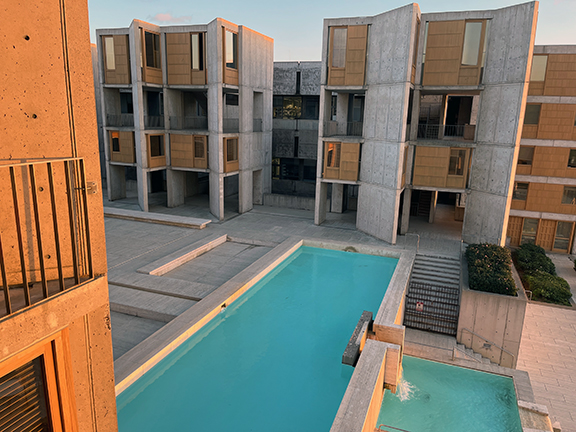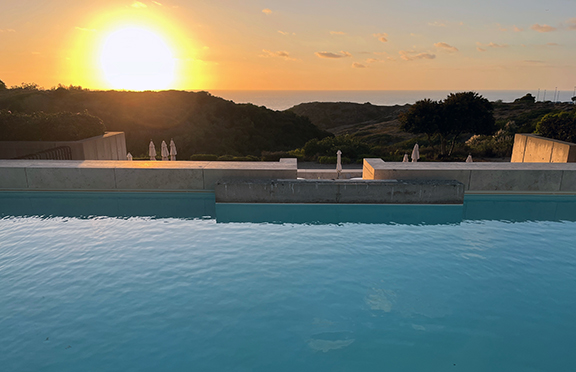
The Salk Institute for Biological Studies is one of the top few research institutes in the world. Founded in 1963 by Jonas Salk, developer of the first safe and effective polio vaccine in the 1950s, it is also an architectural marvel. And it’s in nearby La Jolla, on a bluff overseeing the Pacific Ocean.
I was fortunate to be among several Boston College alumni invited to join an architectural tour of the facility in late October. The tour was led by Lissa Tsu, leader of the San Diego Boston College alumni chapter and a docent at the Salk.
We first gathered inside, alongside the amazing glass sculpture by Dale Chihuly, representing the action within “The Sun.”
This post is going to be mostly photos, and you’ll see why, but first a little background. Salk never patented the vaccine he developed and earned no money from it, wanting it to be distributed as widely and freely as possible.
His desire to found a research institute to develop other medicines was supported financially by the National Foundation/March of Dimes and enabled further by the gifting of 27 acres in La Jolla by the City of San Diego. He partnered with architect Louis Kahn to design the research center. He directed Kahn to “create a facility worthy of a visit by Picasso.” It was completed and opened in 1963. Jonas Salk died in La Jolla in 1995 at the age of 80.
The entrance to the main campus.
 The sun plays a major role in the appearance of the buildings at the Salk. As the sun moves across the sky, it creates shadows and changes the appearance of the concrete and teak that form most of the buildings.
The sun plays a major role in the appearance of the buildings at the Salk. As the sun moves across the sky, it creates shadows and changes the appearance of the concrete and teak that form most of the buildings.
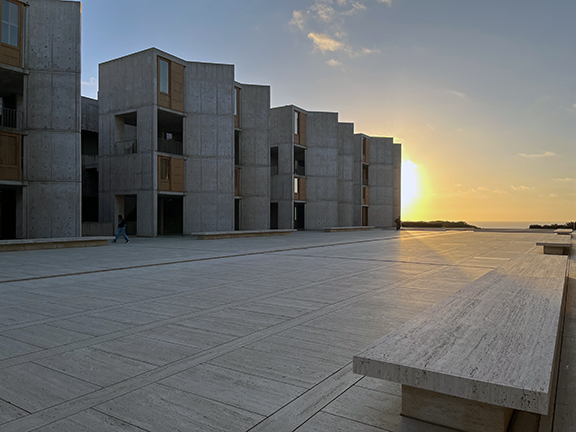 The structures contain several levels, some below “ground” level.
The structures contain several levels, some below “ground” level.
 At the western end of the courtyard is a patio and pool . . . and wonderful view of the Pacific. We also lucked out by having our tour close to sunset.
At the western end of the courtyard is a patio and pool . . . and wonderful view of the Pacific. We also lucked out by having our tour close to sunset.
 There is a water feature that bisects the main courtyard. It’s called the “River of Life.”
There is a water feature that bisects the main courtyard. It’s called the “River of Life.”
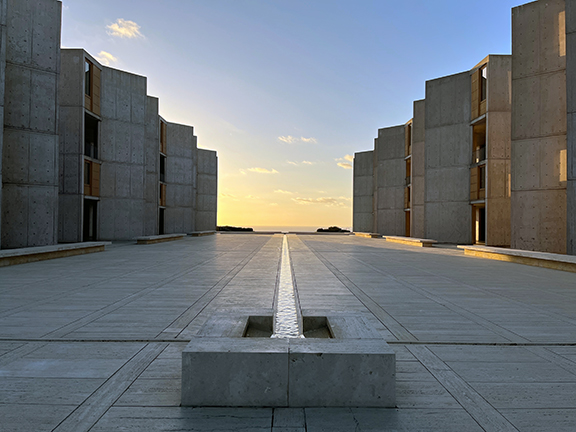 Here it is “in action” (12 seconds).
Here it is “in action” (12 seconds).
There is a much more comprehensive and learned presentation of the Salk Institute architecture on its website. Below is the link to a “virtual tour” of the institute, offering videos on various aspects of the architecture.


